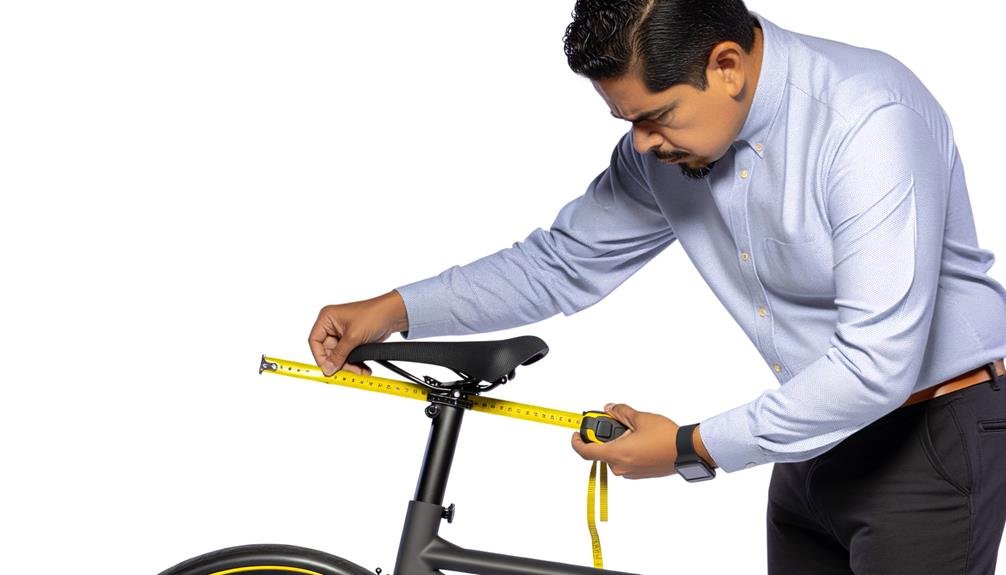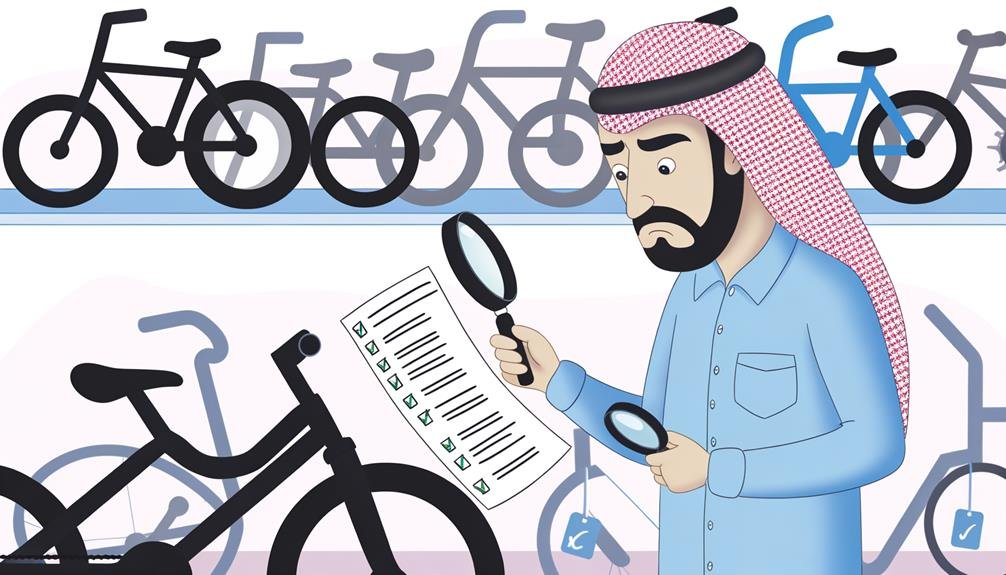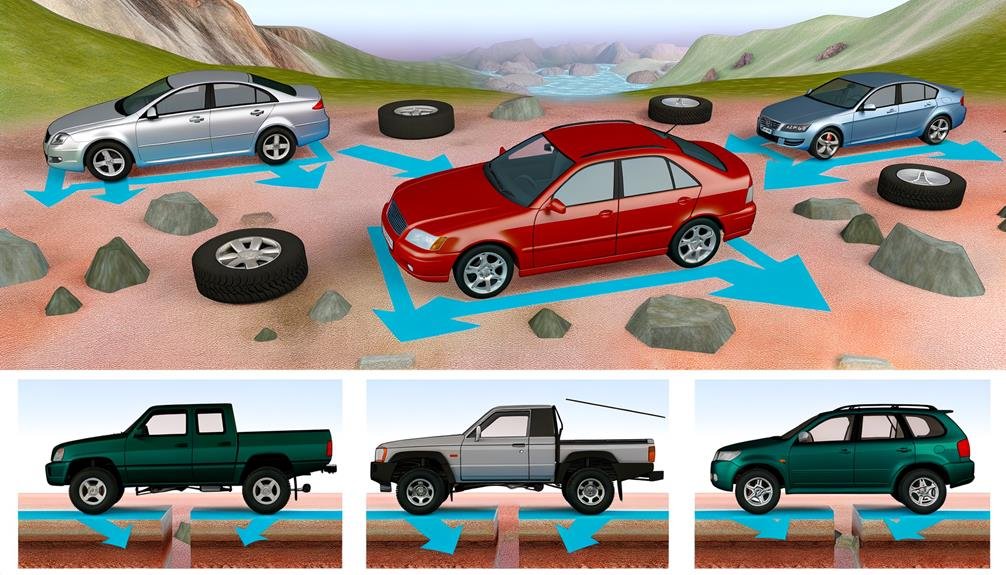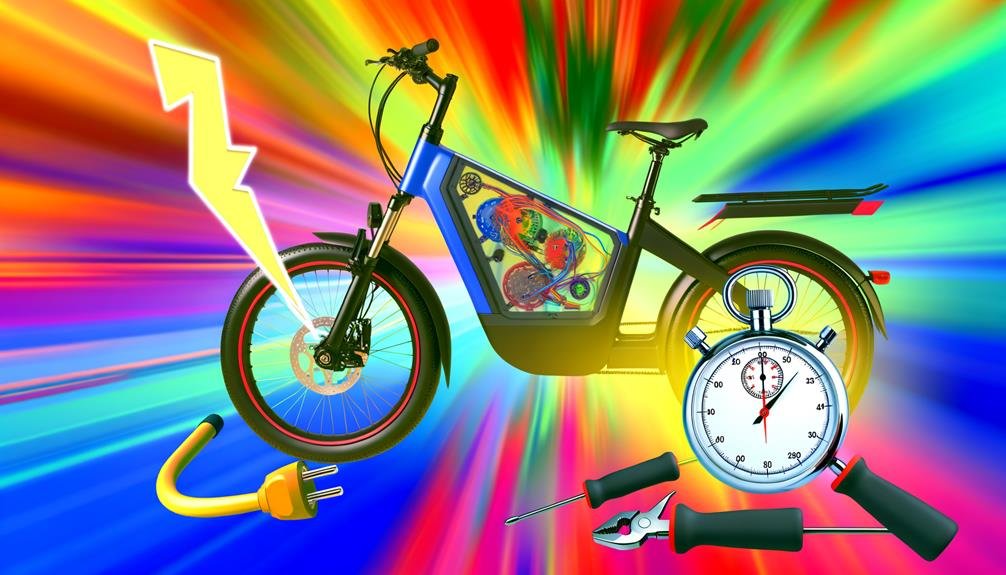Charles Miller is a veteran bike enthusiast with over 12 years of experience dealing with bikes as a mechanic. Despite immense love and expertise for...
Have you ever wondered about the best approach to purchasing an electric bike? We're here to guide you through this seemingly complex process.
It's not merely about choosing a bike with a sleek design or the most advanced features. We'll need to delve into the nitty-gritty details, like understanding the different types of electric bikes, their battery capacities, motor locations, and more.
While it might seem overwhelming at first, don't worry, we've got you covered. Stay with us as we unpack the essentials, and soon you'll be ready to make an informed decision, and possibly ride off on your perfect e-bike.
Key Takeaways
- Electric bikes are classified into Class 1, Class 2, and Class 3, each offering different features and capabilities. It is important to understand the speed limits and legal considerations associated with each class before making a choice.
- When evaluating motor and battery specs, consider factors such as battery capacity, motor placement, power output, torque, charging time, and maintenance requirements. These specs greatly influence the range, performance, and riding experience of the e-bike.
- Different types of e-bikes cater to specific needs and terrain. Consider factors such as commuting, leisurely rides, off-road or long-distance rides, speed and efficiency, or carrying heavy loads when deciding on the right type of e-bike.
- The right fit is crucial for comfort, safety, and efficiency. Consider factors such as bike frame sizes based on height and inseam length, adjustability of seats and handlebars, and the overall stability and control of the bike.
Understanding Electric Bike Classes
When it comes to electric bikes, understanding the different classes – Class 1, Class 2, and Class 3 – is crucial as they each offer unique features and capabilities to match your riding needs and local regulations. In our journey through Electric Bike Buying, we'll explore these types of electric bikes, considering their motor and battery, pedal assist, and battery life.
Class 1 electric bikes provide pedal-assist up to 20 mph, offering aid only when you're pedaling. They're the most affordable and widely accepted, making them an appealing choice for the majority of riders.
Class 2 electric bikes also give pedal assist up to 20 mph but have an added feature: a throttle-powered mode. This means you can take a break from pedaling and let the bike do the work.
Now, if speed is what you're after, Class 3 electric bikes might be your pick. These solely use pedal-assist, but they zoom up to 28 mph. However, they've limited access due to their increased power and speed.
Regardless of the class, remember to consider your riding needs and local regulations. It's not just about speed or battery life, but finding the right fit for your lifestyle. That's what makes Electric Bike Buying an exciting journey.
Evaluating Motor and Battery Specs
Having discussed the types and classes of electric bikes, let's now turn our attention to the heart of these machines: the motor and battery specs. These are critical components that significantly influence the bike's performance and your overall riding experience.
Before buying an e-bike, you need to evaluate:
- Battery Power: The battery capacity is measured in watt hours. It's crucial because it directly affects the range of your e-bike. Larger battery packs offer longer rides but might take longer to charge. Charging time usually varies from three to five hours.
- Motor Specs: The motor and its placement can make a noticeable difference in the bike's performance. Hub drive motors are often placed in the rear wheel, making maintenance and flat changes easier. Mid-drive motors provide a balanced ride and a more natural feel.
- Power Output and Torque: These are key factors that dictate how well your e-bike will perform, especially while climbing hills.
Deciding on the Right Type

As we move forward in our electric bike shopping guide, it's critical to consider what type of bike best suits our needs.
This involves understanding the unique features of various e-bike types, from commuter to mountain bikes.
It's not just about choosing a bike, but choosing the right bike for our lifestyle and terrain.
Assessing Your Needs
Firstly, we need to figure out the type of riding we'll be doing, be it commuting, leisurely rides, off-road adventures, or carrying heavy loads. In assessing your needs, we'll guide you in finding the best electric bike for your lifestyle.
If you plan to ride mostly for commuting or leisure, consider:
- Class 1 or 2 e-bikes from local bike shops
- Taking a test ride on a commuter or cruiser bike
For off-road or long-distance rides, you might prefer:
- Class 3 e-bikes for higher speeds
- Performance road or mountain bikes for a test ride
If carrying heavy loads is your primary need, a cargo e-bike could be the right e-bike for you.
Understanding Bike Features
Let's dive into understanding the key features of different types of e-bikes, starting with the classifications and moving on to the specific types such as commuter, cruiser, and performance road bikes, to help you make the right choice.
Knowing the differences between Class 1, 2, and 3 e-bikes, including speed limits and legal considerations, is crucial.
The type of e-bike you choose largely depends on your needs and the motor power required. Commuter bikes offer cost-effectiveness and versatility, with an electric assist for practical transportation.
Cruiser e-bikes provide comfort and leisurely riding, while performance road bikes are designed for efficiency and speed, albeit with potential comfort trade-offs.
Key Features to Consider
When shopping for an electric bike, it's essential to pay close attention to several key features such as the motor type, battery capacity, frame and suspension, brakes and tires, and additional components and accessories. These features can significantly impact your ride experience.
- Motor Type:
- Hub Drive: These motors are often found in the hub of the rear wheel, offering a seamless integration that can enhance your riding experience.
- Mid Drive: These motors are typically more efficient and provide better balance. They're perfect for those who prefer mountain bikes and need additional pedal power.
- Battery Capacity: Consider the watt-hour capacity. A higher capacity means longer rides without needing to recharge.
- Frame and Suspension: The right frame material and size, coupled with an effective suspension, can provide a smoother, more comfortable ride.
- Brakes and Tires: Look for reliable brakes and durable, puncture-resistant tires to ensure safety and performance.
- Components and Accessories: Additional features like lights, fenders, racks, and suspension seatposts can further enhance your ride and convenience.
Ensuring a Perfect Fit

As we continue our journey in shopping for the perfect electric bike, let's turn our attention to the crucial aspect of ensuring a perfect fit. Understanding bike frame sizes is the first step to a comfortable ride, and the importance of the right fit can't be overstated.
We'll also explore how adjusting the bike's seat can contribute to a better riding experience.
Understanding Bike Frame Sizes
To ensure a perfect fit and thus a comfortable and efficient ride, it's crucial to understand bike frame sizes, which depend on your height, inseam length, and riding style. For an ideal riding experience, it's important to get a good fit. Here's a quick guide:
- Conventional Bikes: These include road bikes and mountain bikes. They typically have standardized sizes (small, medium, large) and are chosen based on your height and inseam length.
- Folding Bikes: These bikes are compact and portable, but their frame sizes are less standardized. Therefore, adjustments to the saddle height and handlebar position might be necessary.
- Commuter Bikes: These bikes are designed for daily use. They often feature adjustable seats and handlebars to ensure a comfortable fit for different body types.
Importance of Right Fit
Understanding the importance of a properly fitted electric bike, we know it's not just about comfort, but also about reducing the risk of injury, improving efficiency, enhancing stability and control, and ultimately elevating the overall riding experience.
When we shop for an electric bike, the right fit should be a top priority. The right fit isn't a luxury; it's a necessity. It maximizes pedal efficiency and minimizes strain on joints and muscles. It's contextually relevant to note that a well-fitted bike can also boost confidence, encouraging more frequent and longer rides.
The importance of right fit extends beyond mere comfort, it's about making the bike an extension of you, enhancing your control, stability, and overall riding experience.
Adjusting the Bike's Seat
Now that we've emphasized the importance of the right fit, let's focus on the specifics of how to adjust the bike's seat to ensure a perfect fit.
Whether you're riding an Electric Mountain bike or another one, seat adjustment is vital to enhance your riding experience.
Here's how to make sure you get it right with bikes and e-bikes:
- Set the seat height so your leg almost fully extends at the bottom of the pedal stroke, keeping a slight bend in your knee.
- Keep the seat level or tilt it slightly downwards for comfort and proper weight distribution.
- Adjust the seat's position to allow comfortable reach to the handlebars while maintaining balance.
Shopping Tips for E-Bikes

Navigating the world of e-bikes can be complex, so we've compiled five essential shopping tips for e-bikes to guide you in finding the perfect electric bike that suits your needs.
First, it's crucial to understand the different e-bike classifications like Class 1, Class 2, and Class 3. These classes have different legal limitations and speed capabilities, which can directly affect your ride.
Secondly, consider the type of e-bike that suits your needs. From commuter bikes to mountain bikes, the drive and power vary greatly. Your intended use and terrain should guide your choice.
Thirdly, the hub of your e-bike, where the motor provides power, is a significant consideration. Evaluate the battery capacity, motor location, and other key features like pedal-assist levels and integrated accessories.
Our fourth tip is to research and prepare by browsing online platforms, visiting local bike shops, and considering factors like warranty and customer reviews.
Lastly, test ride the e-bike. This hands-on experience can help you make an informed decision. Consider factors like range determination, motor placement, and battery technology to ensure it's the perfect fit for you.
Essential Accessories for E-Bikes
Having explored the key considerations when shopping for an e-bike, let's shift our focus to the essential accessories for e-bikes that can enhance the safety, convenience, and overall riding experience. Just as we'd shop for 67 different types of shoes to match various occasions, the variety of accessories available for bikes, particularly electric bikes, is equally extensive.
To help you navigate this variety, we've categorized the essentials into three main areas:
- Safety Accessories: This includes helmets, of course, to protect your head, and lights for visibility during low-light or nighttime rides.
- Security Accessories: A sturdy lock is a must-have to keep your e-bike safe from theft, especially if you frequently park in public areas.
- Convenience Accessories: Fenders help keep you and your bike clean, while a rack or panniers are perfect for cargo e-bikes, allowing you to conveniently carry items or groceries.
Frequently Asked Questions
What Should You Look for When Buying an Ebike?
When we're buying an e-bike, we're checking for battery life, motor power, frame material, brake system, gear options, and suspension quality. These features ensure we're getting a reliable, efficient, and comfortable ride.
How Much Do You Have to Spend to Get a Good Ebike?
We've got to consider budget, financing options, quality indicators, price comparison, maintenance costs, and warranty importance. A decent e-bike starts around $1,000, but it's worth it for better performance and durability.
How Do I Know What Size Electric Bike to Get?
We're figuring out the right size for an electric bike. We'll consider frame height, wheel size, bike weight, seat adjustability, and handlebar position to ensure rider comfort. We'll guide you through every step.
What Is the Difference Between an E-Bike and an Electric Bike?
We're often asked about the difference between an e-bike and an electric bike. Truth is, there's no difference! They're just different terms for the same thing: bicycles that use electric power for extra speed and assistance.
Conclusion
So, we've navigated the maze of e-bike shopping together, from deciphering jargon to weighing up the specs.
We've climbed the mountain of decision-making, choosing the perfect type, and pinpointing key features.
Now, armed with knowledge, we're ready to pedal into the sunset with our ideal e-bike.
Remember, the journey doesn't end here; the right accessories and support are essential.
Happy e-biking!

Charles Miller is a veteran bike enthusiast with over 12 years of experience dealing with bikes as a mechanic. Despite immense love and expertise for his Tacoma, he rides his Trek Ebike more. Anytime you meet him, you’ll either hear him talking about Bikes, or writing about all things bikes and cars on this blog.
More Posts


